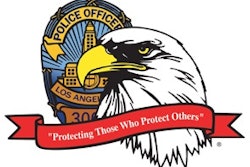For the last year or so, the Washington Post has been gathering data on fatal police shootings of civilians. Commentators have taken the Post’s data as evidence that the police are gunning down unarmed blacks out of implicit bias. But a close examination of the Post’s findings presents a more complicated picture of policing and casts doubt on the notion that these shootings were driven by race.
The Post began its police shootings project in response to the 2014 killing of Michael Brown in Ferguson, Missouri. The results: As of Jan. 15, the Post had documented 987 persons killed in police shootings in 2015, about twice the number historically recorded by federal agencies. Whites were 50 percent of the fatalities, and blacks were 26 percent. By comparison, whites are 62 percent of the U.S. population, and blacks, 13 percent. The ensuing debate has largely centered on whether the disproportionate number of black deaths is a result of police racism or the relatively high rate of crime in black neighborhoods, which brings black men into more frequent, and more fraught, encounters with the police.
Last August the Post focused its research on shootings of "unarmed" black men, who the paper said were seven times more likely than unarmed white men to die by police gunfire. The article noted that 24 of the 60 “unarmed” deaths up to that date — some 40 percent — were of black men, helping to explain "why outrage continues to simmer a year after Ferguson." By year’s end, there were 36 unarmed black men (and two black women) and 31 unarmed white men (and one white woman) among the total of 987 persons killed by police. The rate at which unarmed black men were more likely than unarmed white men to die by police gunfire had dropped, but was still six-to-one.
But the numbers don’t tell the whole story. It is worth looking at the specific cases included in the Post’s "unarmed victim" classification in some detail, since that category is the most politically explosive. The “unarmed” label is literally accurate, but it frequently fails to convey highly-charged policing situations. In a number of cases, if the deceased ended up being unarmed, it was certainly not for lack of trying. At least five black suspects had reportedly tried to grab the officer’s gun, or had been beating the cop with his own equipment. Some were shot from an accidental discharge triggered by their own assault on the officer. And two individuals included in the Post’s “unarmed black victims” category were struck by stray bullets aimed at someone else in justified cop shootings. If the persons killed were not the intended targets, then racism could have played no role in their deaths.
In one of those unintended cases, an undercover cop from the New York Police Department was conducting a gun sting in Mount Vernon, just north of New York City. One of the gun traffickers jumped into the cop’s car, stuck a pistol to his head, grabbed $2,400 and fled. The officer gave chase and opened fire after the thief again pointed his gun at him. Two of the officer’s bullets accidentally hit a 61-year-old bystander, killing him. That older man happened to be black, but his race had nothing to do with his tragic death.
Unfortunately, innocent blacks like the elderly Mount Vernon man probably do face a higher chance of getting shot by stray police fire than innocent whites. But that is because violent crime in their neighborhoods is so much higher. The per capita shooting rate in Brownsville, Brooklyn, with its legacy of poverty and crime, is 81 times higher than in working-class Bay Ridge, Brooklyn, a few miles away, according to the New York Police Department. This exponentially higher rate of gun violence means that the police will be much more intensively deployed in Brownsville, trying to protect innocent residents and gangbangers alike from shootings. If the police are forced to open fire, in rare instances a police bullet will go astray and hit a bystander. That is tragic, but that innocent’s chance of getting shot by the police is dwarfed by his chance of getting shot by criminals.
Other unarmed blacks in the Post’s database were so fiercely resisting arrest, judging from press accounts, that the officers involved could reasonably have viewed them as posing a grave danger. In October 2015, a San Diego officer was called to a Holiday Inn in nearby Point Loma, after hotel employees ejected a man causing a disturbance in the lobby. The officer approached a male casing cars in the hotel’s parking lot. The suspect jumped the officer and both fell to the ground. The officer tried to Tase the man, hitting himself as well. The suspect repeatedly tried to wrench the officer’s gun from its holster, according to news reports, and continued assaulting the officer after both had stood up. Fearing for his life, the officer shot the man.
It is hard to see how race entered into that encounter. Someone who tries for an officer’s gun must be presumed to have the intention to use it.
Read Complete Article at the Marshall Project.














